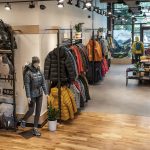ThredUP released the results of its 2022 Resale Report that predicts the U.S. secondhand market will double by 2026, reaching $82 billion.
ThredUP said this year’s study offers insights into factors driving market growth, why consumers think secondhand first and the rise of branded re-commerce among retailers. The report also includes an exploration of inflation’s impact on consumers and a ten-year look at the last decade in resale.
“The last ten years of resale were dominated by marketplaces, but brands and retailers are driving the next wave of secondhand. We’re still at the beginning of this trend, but the acceleration of resale adoption is a positive signal with enormous benefits for the planet. This year’s report proves that with the collective power of conscious consumers, resale marketplaces, and forward-thinking brands and retailers, we can pioneer a more sustainable future for the fashion industry,” said James Reinhart, ThredUP CEO & Co-Founder.
U.S. Leads Secondhand Growth
- The global secondhand apparel market will grow 127 percent by 2026, three times faster than the worldwide apparel market overall;
- The U.S. secondhand market should double by 2026, reaching $82 billion;
- Secondhand saw a 32 percent growth in 2021; and
- Resale is expected to grow 16 times faster than the retail clothing market by 2026.
Technology And Online Resale Drive U.S. Growth In Secondhand Market
- Online resale is the fastest-growing secondhand sector and is expected to grow four times by 2026;
- 50 percent of total secondhand dollars are expected to come from online resale by 2024; and
- 70 percent of consumers said it is easier to shop secondhand than five years ago.
Resale Is A Bright Spot In Inflationary Market
- 58 percent of consumers said secondhand has helped during a period of inflation;
- 80 percent of consumers buy the same or more secondhand apparel compared to 49 percent of consumers purchasing the same or more apparel items overall; and
- 25 percent of consumers said they would consider buying more secondhand product if prices in apparel, footwear and accessories continue to rise.
Brands/Retailers Embrace Resale To Meet Consumer Demand; Resale Is Part Of Today’s Retail Landscape
- Brands with resale shops increased 275 percent in 2021 compared to 2020, according to the Recommerce 100;
- 78 percent of retail executives said consumers are already participating in resale, up 16 percent from 2020;
- 52 percent of retail executives said offering resale has become table stakes for retailers, up 16 percent from 2020; and
- 88 percent of retail executives who offer resale sid it has driven revenue.
Resale A Solution To Wastefulness
- Secondhand displaced nearly one billion new clothing purchases in 2021;
- About 2-in-3 consumers believe their consumption habits significantly impact the planet.
Consumers Think Secondhand First
- 41 percent of consumers said that when they shop for apparel, secondhand is the first place they consider;
- 62 percent of Gen Z and Millennials said they look for an item secondhand before purchasing new; and
- 46 percent of Gen Z and Millennials think about the resale value of an apparel item before buying it.
Social Pressure Fuels Consumers’ Urge To Buy Fast Fashion
- 62 percent of fast fashion shoppers said fast-fashion retailers encourage consumers to buy what they don’t need;
- 1-in-5 fast-fashion shoppers said they felt pressured to buy the latest styles due to social media;
- 65 percent of those who bought their first resale item a year ago said they would quit buying fast fashion; and
- 65 percent of consumers who shop fast fashion said they would like to buy more secondhand.
“Resale has emerged from the pandemic in an extremely strong position. More consumers are shopping secondhand, growth has accelerated, and the interest from traditional retailers has soared. The economic outlook remains uncertain, but with inflation driving apparel prices higher and higher, more shoppers appear to be turning to secondhand to make their budgets stretch further. These things will ensure resale remains a disruptive part of the market and a force for good in helping people shop sustainably,” said Neil Saunders, managing director, GlobalData















